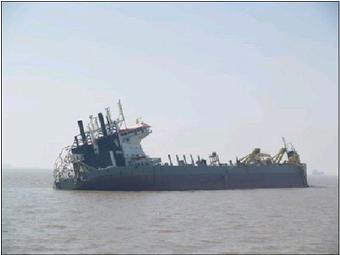Ship Survivability
Backgrounds
In 2004 the SHIPSURV project was initiated. The aim of the project was to demonstrate the potential of hydrodynamic and structural analyses to assess the survivability of a vessel after a damage incident, as a means to assess real damage scenarios and potentially improve safety at sea.. There were two primary objectives:
- Develop analysis tools to evaluate the hydrodynamic and structural behaviour of a vessel to investigate its survivability following damage.
- Demonstrate that the survivability of a ship in flooded condition can be improved significantly by applying a survivability assessment procedure to investigate mitigating options.
These objectives were partially achieved in the SHIPSURV project. It was decided by the CRS community to continue the efforts started within the SHIPSURV project with the set up of the SHIPSURV2 project.

Objectives
To fully validate the analysis tool set recently developed within the SHIPSURV project:
- A small study will be conducted to compare PRETTI flooding with the ITTC benchmark data and a selection of validation data from SAFEDOR, to assess the performance of the PRETTI code against the industry standard benchmarks.
- An experimental program is to be conducted with model experiments on a strain gauged damaged model in waves to generate data with which to validate the tool set for stability and structural loads. The model test program is proposed to generate both motion, water height and load data for comparison with PRETTI.
Expand the capability of the analysis tool set to better model and asses the survivability of a damaged vessel:
- Currently the flooding module does not allow the ability to use pumps to actively move water between compartments during the simulation. This has been identified as an important option while investigating damage control or remedial actions following a damage incident. The capability of the current flooding module is to be extended to allow water to be pumped between tanks during the time domain simulation. This will allow direct assessment of stability and structural issues as a result of damage control or remedial flooding actions.
Develop and test methods to assess the hydrodynamic and structural behavior of a vessel using the tool set.
- The existing assessment method developed in SHIPSURV, will be fully tested and evaluated in SHIPSURV II. The methodology will be further expanded to incorporate such areas as risk and probability of survival and time to sink issues.
To exploit and demonstrate the use of the toolset on real documented damage cases to show how the tools can be used for analysis of real scenarios’.
- Many incidents and accidents involving flooding and structural collapse have been reported and documented. Well known cases such as European Gateway, Herald of Free Enterprise, Estonia, Erica, Prestige, Rockness and MSC Napoli have been reported. A literature study is to be carried out on reported incidents and accidents. Three cases will be selected for study using the developed analysis tools. A selection of events during the incidents/accidents will be ‘simulated’ with the SHIPSURV-2 analysis tools to demonstrate the tools can predict the events from the real life incidents and be used to assess real scenarios.
Expected Results
– Validation report
– Model test report
– Enhancement of Flooding Module with pump model
– Report on development and testing of assessment methodology
– Report on demonstration of tools for known incidents and accidents
